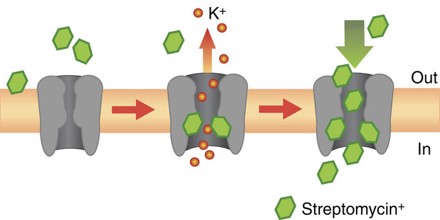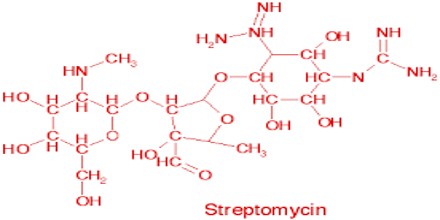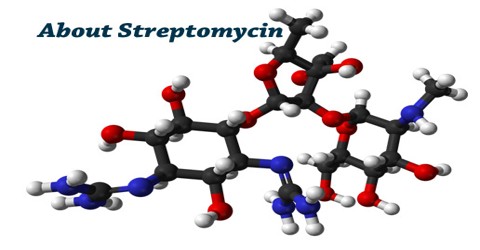About Streptomycin
Definition
An antibiotic agent obtained from Streptomyces griseus that is active against the tubercle bacillus and a large number of gram-positive and gram-negative bacteria. Streptomycin also used in the form of dihydrostreptomycin (aldehyde of streptomycin reduced to CH2OH). It is used virtually exclusively in the treatment of tuberculosis; toxicity includes eighth cranial nerve damage leading to deafness and/or vestibular dysfunction.

Streptomycin was discovered in 1943 from Streptomyces griseus. It is on the World Health Organization’s List of Essential Medicines, the most effective and safe medicines needed in a health system. The wholesale cost in the developing world is between 0.38 and 4.39 USD per day.
Streptomycin is also indicated for therapy of tuberculosis when one or more of the above drugs are contraindicated because of toxicity or intolerance. The management of tuberculosis has become more complex as a consequence of increasing rates of drug resistance and concomitant HIV infection. Additional consultation from experts in the treatment of tuberculosis may be desirable in those settings.
Uses of Streptomycin
Streptomycin should be used only to treat or prevent infections that are proven or strongly suspected to be caused by susceptible bacteria. When culture and susceptibility information are available, they should be considered in selecting or modifying antibacterial therapy. In the absence of such data, local epidemiology and susceptibility patterns may contribute to the empiric selection of therapy.

A component of several combined anti-tuberculosis chemotherapeutic regimens currently recommended by WHO (World Health Organization), of particular use when primary resistance to other drugs is suspected.
Streptomycin must be administered by deep intramuscular injection. Syringes and needles should be adequately sterilized, to exclude any risk of transmitting viral pathogens.
Adults and children: 15 mg/kg daily or two or three times weekly. Patients over 60 years may not be able to tolerate more than 500-750 mg daily.
Streptomycin should be avoided, when possible, in children because the injections are painful and irreversible auditory nerve damage may occur. Both the elderly and patients with renal impairment are also vulnerable to dose-related toxic effects resulting from accumulation. Serum levels should be monitored periodically and dosage adjusted appropriately to ensure that plasma concentrations, as measured when the next dose is due, do not rise above 4 micrograms/ml.
Streptomycin should not be used in pregnancy. It crosses the placenta and can cause auditory nerve impairment and nephro-toxicity in the fetus. It is traditionally given intramuscularly, and in many nations is only licensed to be administered intramuscularly, though in some regions the drug may also be administered intravenously.

Side Effects of Streptomycin
The most concerning side effects, as with other aminoglycosides, are nephrotoxicity and ototoxicity. Transient or permanent deafness may result. The vestibular portion of cranial nerve VIII (the vestibulococlear nerve) can be affected, resulting in tinnitus, vertigo and ataxia. Nephrotoxicity and can potentially interfere with diagnosis of kidney malfunction.

Common side effects of Streptomycin include:
- nausea,
- vomiting,
- stomach upset,
- loss of appetite,
- spinning sensation (vertigo),
- injection site reactions (pain, irritation, and redness),
- tingling or prickling sensation in the face,
- rash,
- fever,
- hives, and
- swelling (edema).
Dosing of streptomycin is based on the patient’s body weight. Treatment regimens vary. Streptomycin may interact with live bacterial vaccines, amphotericin B, diuretics, or high doses of aspirin/NSAIDs.

Mechanism of Streptomycin
Streptomycin is a protein synthesis inhibitor. It binds to the small 16S rRNA of the 30S subunit of the bacterial ribosome, interfering with the binding of formyl-methionyl-tRNA to the 30S subunit. This leads to codon misreading, eventual inhibition of protein synthesis and ultimately death of microbial cells through mechanisms that are still not understood. Streptomycin is an antibiotic that inhibits both Gram-positive and Gram-negative bacteria, and is therefore a useful broad-spectrum antibiotic.















